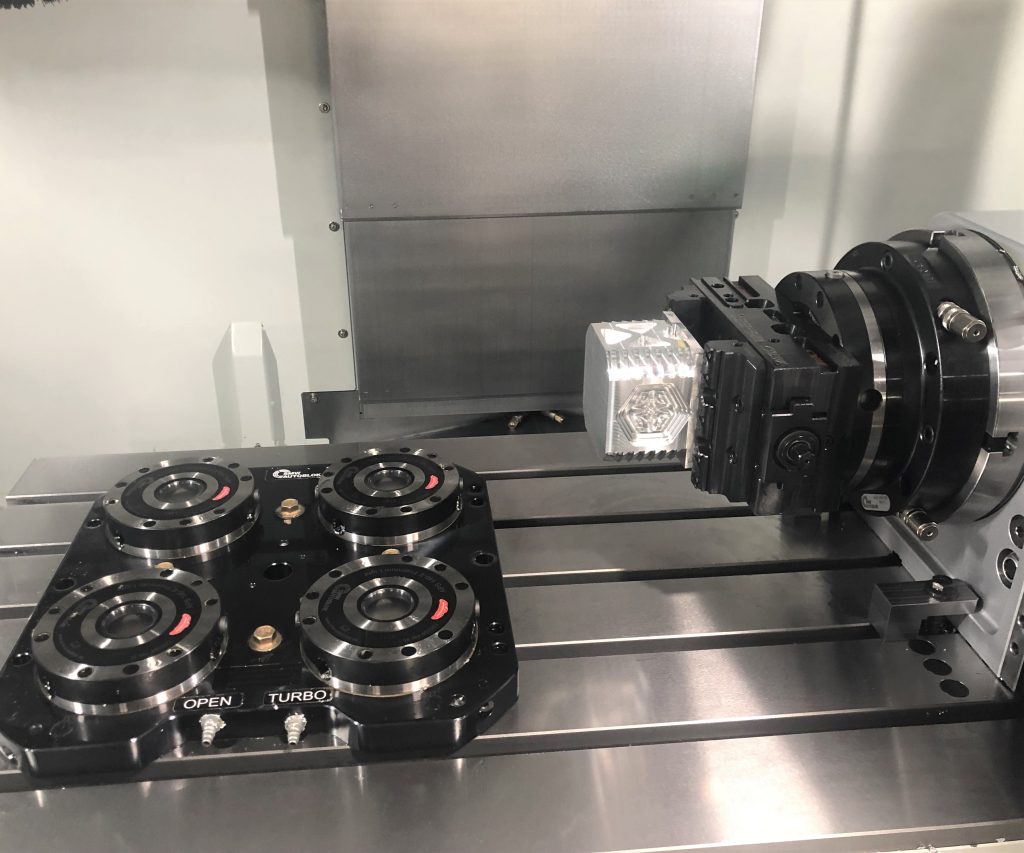How to Maximize Vise Performance with Stationary Workholding
24 June 2025

Objective:
To provide machinists and operators with clear, practical guidance for selecting, using, and maintaining stationary vises to ensure consistent part quality, shorter setup times, and extended equipment life.
1. Match the Setup to the Job Requirements
Low-Volume or Prototype Work:
Use single vises with soft jaws or custom inserts tailored to part geometry. Precision is key when running first articles or one-off jobs.
High-Volume Production:
Multi-vise and modular setups on grid plates can improve throughput and minimize setup changes. Configurations should allow for consistent part positioning across cycles.
Jaw and Insert Selection:
Soft jaws can be machined to match specific part contours and hard jaws are ideal for repetitive jobs requiring high clamping force.
Contoured jaws or specialty inserts handle irregular shapes or round parts. Low clamping depth inserts (e.g., serrated or SinterGrip-type) offer a secure grip with minimal material engagement, reducing waste and increasing accessibility, especially in 5-axis setups.
Tip: Always ensure enough surface contact to maintain part stability without causing distortion.
2. Reduce Setup Time with Quick-Change and Modular Systems
• Quick-change jaw systems and modular vise platforms allow for faster job changeovers—critical in high-mix environments.
• Zero-point fixturing systems can drastically cut setup time by offering repeatable positioning without manual alignment.
• Modular base plates (e.g., grid or slot-style systems) allow multiple vises or fixtures to be repositioned accurately and quickly.
• These systems save time on the floor and free up spindle hours, particularly when part changeover is frequent.
3. Keep Clamping Surfaces Clean and Consistent
Chips and residue between the jaw and the workpiece can lead to misalignment and reduced clamping force.
Best practices:
Clear chips and swarf from vise beds, jaws, and insert serrations before and after each job.
Inspect part contact areas for surface irregularities.
Confirm chip and coolant evacuation systems are functioning properly.
4. Implement a Preventive Maintenance Schedule
Daily / Weekly:
• Wipe down exposed metal surfaces and remove chips from jaws and vise bed.
• Lubricate handles and jaw guides if accessible.
• Check for smooth jaw movement and verify consistent clamping force.
Monthly:
• Inspect for jaw misalignment or screw wear.
• Fully cycle jaws to ensure lubrication distribution.
• Review insert condition and jaw seating.
Every 6–12 Months:
• Disassemble movable jaws to clean guideways and lubricate screws and bearings.
• Inspect and re-tension adjustable jaw segments if applicable (e.g., tighten and back off 1/8 turn; adjust as needed for ease of movement).
• Check modular mounting surfaces and alignment pins for wear or debris.
5. Key Points
The right vise configuration and jaw selection improves part quality and reduces rework. Modular systems and quick-change technologies enhance shop flexibility and reduce non-cutting time. Clean clamping surfaces and scheduled maintenance extend equipment life and reduce downtime.
Integrate these practices into daily operations and standardize across teams for consistency.
For Application-Specific Support: Consult your lead machinist, tooling supervisor, or maintenance lead for questions related to job setup or equipment troubleshooting.
Download the .pdf below:
